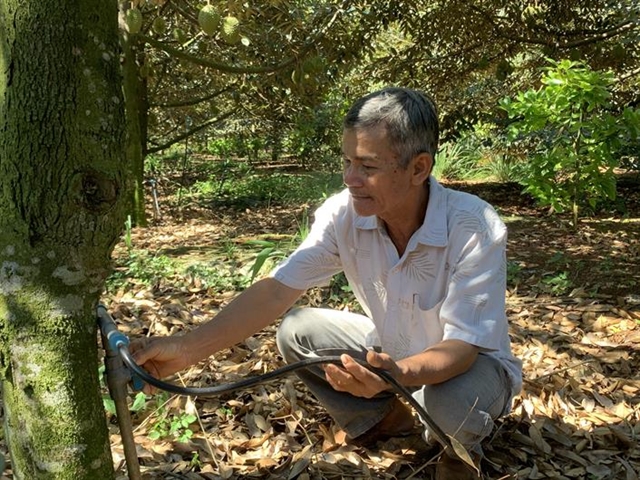 Environment
Environment

 |
| More than 100 wild animals are released to nature at the Bù Gia Mập National Park in Bình Phước Province after rehabilitation. — VNA/VNS Photo |
BÌNH PHƯỚC — A total of 112 wild animals of 20 endangered species have been released into the forest at Bù Gia Mập National Park in the southern province of Bình Phước.
The wild animals had been rescued by Củ Chi District’s Wildlife Rescue Centre in HCM City from captivity, and then given to the Bù Gia Mập National Park’s Centre for Rescue, Conservation and Development of Creatures.
They are given proper nutrition and treatment for diseases, and rehabilitated before being released back into the wild.
Most of them are endangered species listed in Group IB in Việt Nam's Red Book, such as rái cá vút bé (Anoyx cinereus), kỳ đà vân (Veranus bengalensis), and rắn hổ mang chúa (Ophiophagus Hannah).
The exploitation or commercial use of these species is strictly banned in the country.
The Bù Gia Mập National Park is known as the “green lung of the southeastern region”. The park covers more than over 25,600 hectares, including 25,505 ha of natural forest.
It is home to 832 species of wild animals, 724 species of plants and 278 species of herbs.
Of the wild animals, there are 106 mammal species, 248 bird species, 59 reptile species, 28 amphibian species, 342 insect species, and 49 fish species.
In 2010, the park started rescuing, raising, and releasing wild animals back to nature.
The park set up a division for rescue, conservation, and development of wild animals in 2013, which became the centre in 2016. Since then, the centre has rescued a large number of wild animals and released them to the forest in the park.
The centre also carries out communication activities about wild animal protection, and people and organisations visit the centre to learn more about wildlife. — VNS









